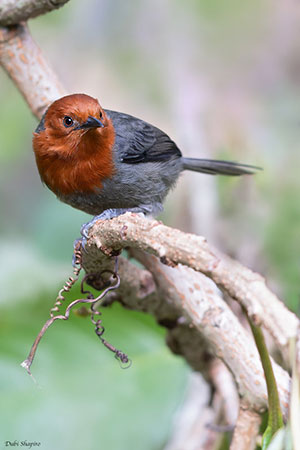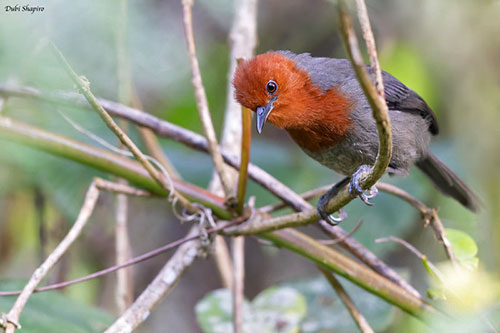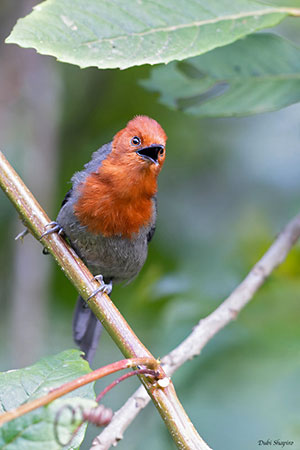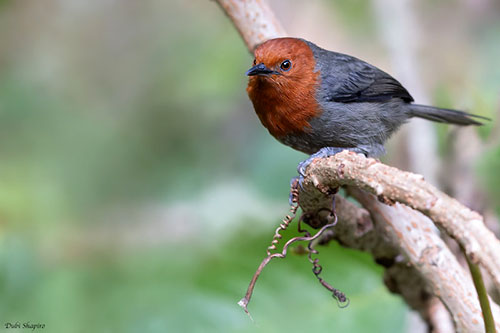
Fr: Bathmocerque des Rubeho - Cisticole des Rubeho
Ang: Rubeho Warbler
All: Rubehofuchssänger
Esp: Prinia de Rubeho
Nd: Rubehovoszanger
Sd: rubehosångare
Photographer:
Dubi Shapiro
Dubi Shapiro Photo Galleries
Text by Nicole Bouglouan
Sources:
HANDBOOK OF THE BIRDS OF THE WORLD Vol 11 by Josep del Hoyo, Andrew Elliott and David Christie - Lynx Edicions - ISBN: 849655306X
Birds New to Science: Fifty Years of Avian Discoveries Par David Brewer – Editeur: Bloomsbury Publishing, 2018 – ISBN: 1472906292, 9781472906298 – 416 pages
BIRDS OF AFRICA SOUTH OF THE SAHARA by Ian Sinclair and Peter Ryan - Princeton University Press Princeton and Oxford - ISBN: 0691118159
Birds of Kenya and Northern Tanzania by Dale A. Zimmerman, David J. Pearson and Donald A. Turner - Bloomsbury Publishing, 2020 – ISBN: 1472981030, 9781472981035 - 576 pages
Field Guide to the Birds of East Africa: Kenya, Tanzania, Uganda, Rwanda, Burundi by Terry Stevenson, John Fanshawe – Editeur: Bloomsbury Publishing, 2020 – ISBN: 1472986628 - 9781472986627 – 624 pages
CREAGUS@Monterey Bay (Don Roberson)
Fatbirder - The World’s Richest Information Resource about Birds for Birders
Changing places: how the results of new field work in the Rubeho Mountains influence conservation priorities in the Eastern Arc Mountains of Tanzania
Rubeho Warbler
Scepomycter rubehoensis
Passeriformes Order – Cisticolidae Family
INTRODUCTION:
The Rubeho Mountains are located in C Tanzania. It is one of the least explored and understudied region in the Eastern Arc Mountains, and several endemic birds, among them the Rubeho Warbler, are living in reserves. These mountains include a main highland area and several ridges and massifs.
Depending on the authors, the Rubeho Warbler is considered a full species or a subspecies of S. winifredae. It is there treated as a full species. It was only described in 2009 (Bowie et al. 2009).
The Rubeho Warbler frequents the dense vegetation of wet forests at fairly high elevations. It is endemic to the Rubeho Mountains. It feeds on insects found in the undergrowth. The breeding behaviour is currently unknown.
The Rubeho Warbler is not recognized by Birdlife International. It is described as rather uncommon and threatened by habitat loss. The status of Endangered or similar is probably adapted to this species.
DESCRIPTION OF THE BIRD:
Biometrics:
Length: 13-14 cm
Weight: M: 20 g – F: 11 g
The Rubeho Warbler adult male has dark mouse-grey nape and upperparts, but the upperwing and the strongly graduated tail are darker.
The underparts are pale-mottled grey-brown.
On the head, crown, face, chin, throat and upper breast are deep rufous.
The thin, fairly long, pointed bill is black. The eyes are brown. Legs and feet are dark grey.

The female is similar but she has duller appearance overall.
The juvenile resembles female but the throat is paler tawny-orange. Top of head and upperparts are pale olive-brown, and the underparts are browner.
RANGE:
The Rubeho Warbler is confined and very local in the highest parts of Ukaguru Mountains and in Ukwiva Forest in Rubeho Mountains in C Tanzania.
HABITAT:
The Rubeho Warbler is found in wet forest where it frequents the dense vegetation of tall herbs and shrubs. But it is also observed on steep slopes and in areas with broken canopy caused by landslides or past logging, and also in clearings created by large animals.
The species is visible between 1,300 and 1,900 metres of elevation.
CALLS AND SONGS: SOUNDS BY XENO-CANTO
The duet song of the Rubeho Warbler is a long series of ringing calls alternating between two pitch levels. The song is often delivered as duet.

BEHAVIOUR IN THE WILD:
The Rubeho Warbler feeds mainly on insects caught in the low vegetation. The fairly long bill is used to pick prey items from hidden places. The bird also probes into hanging clusters of dead leaves, vine tangles or other plants.
The prey consist mainly of invertebrates and their larvae, such as caterpillars, beetles, ants and small flies.
The bird often forages alone or in pairs in low vegetation, taking sometimes prey from the ground but constantly moving up to 6 metres above the ground.
The breeding behaviour of the Rubeho Warbler is unknown.
In this family, apart two polygynous species, all Cisticolidae breed single and defend the breeding territory. The resident species remain territorial all year-round. Both mates may be involved in territory defence.
The courtship displays of the Rubeho Warbler are unknown, but we can suggest that the bright rufous head and upper breast are enhanced by adapted movements and postures during the displays.
When the mates are close to each other, the male may use visual signals such as its black mouth while singing. The strongly graduated tail is also cocked or fanned.
But more information is required.

The Rubeho Warbler is sedentary in its reduced range.
The flight is agile and easy.
REPRODUCTION OF THIS SPECIES:
The breeding season is probably similar to that of the former nominate race S. winifredae, and takes place between October and March.
The Cisticolidae species often nest low in vegetation, and most of them build a ball-shaped enclosed structure with a side entrance at the top. This type of nest is usual in wet areas, whereas the species living in more arid country usually build open, cup-shaped nests. The closed nest is a method of reducing the risk of predation.
The eggs are not described. The incubation generally starts once the clutch is complete, and ranges from 10 to 18 days, and more generally from 12 to 15 days.
The chicks are altricial, blind and naked at hatching. They are mainly brooded by the female which is fed by the male during this period. Both parents feed the young. They leave the nest 13-16 days after hatching.
This information is only general information about the family Cisticolidae. Further study is needed.
PROTECTION / THREATS / STATUS:
The Rubeho Warbler is not assessed by Birdlife International. This species is described as rather uncommon. It is probably affected by habitat loss due to dense human population, involving forest loss caused by frequent burning for agriculture expansion.
The Rubeho Warbler probably deserves the status of Endangered or Near Threatened species.
